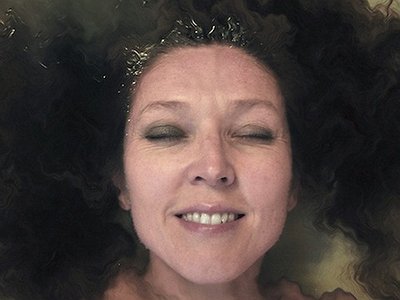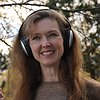Part 2
How strictly do you separate improvising and composing?
For me they are different musical forms and musical experiences contingent on the way the material unfolds and is structured through time. Installation art also occupies it’s own category for me. I know some performer-improvisers who would disagree with me though.
How do you see the relationship between sound, space and composition and what are some of your strategies and approaches of working with them?
I think of sound, space and composition as integrated: in everyday experience sound exists in space, has a spatial relationship to other sounds and to the environment. In music I also consider sound in this way. The manner in which a sound positions itself depends a lot on how abstract or explicit it is in identity. I experience that by ignoring the interrelationships between sound and space a composition can become messy.
What's your perspective on the relationship between music and other forms of art – painting, video art and cinema, for example – and for you and your work, how does music relate to other senses than hearing alone?
Answering this question backwards, I find music with visual elements to be a multimodal experience where vision changes how we hear and vice versa. These phenomena result in different experiences when only hearing music compared to watching music being performed. I’ll experience the same composition somewhat differently in each circumstance. For other types of multimodal experiences, such as sound-visual installations, I find it trickier to create an integrated work composed of sound and visual elements, where the visual side renders the audio of secondary importance. I enjoy searching out audio-visual installations and artworks, but there are very few that I have experienced as achieving a balance. Many do however use sound as an important addition to the totality, whether as a parallel reflective stream such as sound and painting, or as a tighter synchronisation such as in music and video artworks. In my own work I have included visuals in interactive installations (OSSTS, Aftershock and We Are Not Alone). In these projects I think the blend of sense experiences hinged on the installation format and listeners’ physical exploration of sound, space and visual object.
What's your view on the role and function of music as well as the (e.g. political/social/creative) tasks of artists today - and how do you try to meet these goals in your work?
I think that art can connect to technology and society, be provocative, a political-social commentary or simply be intended to imbue a meaningful experience in listeners. But I’m not convinced that art can actually make a difference in changing mindsets or society, although art may encourage us to reflect on, or point to, issues that open our awareness. I can’t think of any clear example where art has changed political or social policy, and if there is a effect, it is marginal compared to other socio-political-economic factors. Public outreach and art projects encouraging children to engage in the world’s problems are possible exceptions (topics such as climate change, pollution and oppression are good examples), but we wont know until that generation become the policy makers. In my own work, I try to connect to the world though inspiration from science, from structures that organise society, positive societal developments and when appropriate, public outreach in environmental science. I am also interested in how reality and fiction can merge together, creating diverse paradigms provoking people to listen to and view ideas in a different way.
Listening is also an active, rather than just a passive process. How do you see the role of the listener in the musical communication process?
How I experience listening, there are types of music that I listen to passively, or play in the background while doing something non-challenging (I enjoy gardening and listening to music or podcasts), and music that I listen to actively where I need to listen and do nothing else. I have friends who work more effectively on intellectual tasks with music in the background, yet this is tricky for me. Also their choice of ‘background music’ is different from mine. So in general, I find both active and passive listening as two important abilities in life, where ultimately it’s in individuals’ hands as to how they choose to listen. The work is a phenomenon that lives as an organism inseparable from the conditions in which it is presented and perceived. From the moment of finalising the work, I can sometimes control the conditions in which it lives but that is all.
Reaching audiences usually involves reaching out to the press and possibly working with a PR company. What's your perspective on the promo system? In which way do music journalism and PR companies change the way music is perceived by the public?
For a long time I didn’t think about promotion. More recently, as the number of artists involved in my own and related genres have increased, I realised that some effort in self-promotion is needed and I’m still trying to find a balance. I haven’t approached a PR company, although the small CD labels do some of this work. Sometimes I’m baffled at the promotion of a mediocre artist, often via music journalism, who has been profiled in some way. I think some people are skilled at self-promotion, networking and contact building, which nowadays, in terms of reaching an audience, may be a more important skill than music making. Also, even in the more experimental music circles, journalism covers popular trends, which can make it difficult for a reader / listener to find new music. There are very few instances where I’ve discovered an interesting new work via journalistic channels.
Do you have a musical vision that you haven't been able to realise for technical or financial reasons – or an idea of what music itself could be beyond its current form?
I would like to create a multi-channel spatial stadium extravaganza with a full 3D speaker hemisphere in collaboration with a light and video artist. I think there is great potential to enthuse a wide audience if the presentation format is impressive on a large enough scale. Such an event would need serious compositional considerations and an infrastructure of media, publicity and promotion activities. With new advances in Internet streaming the event could connect internationally to a network of concert and public spaces, as well as collaborate with the many smaller 3D audio concert spaces that have recently sprung up around the world.
More information and a detailed discography can be found on the Natasha Barrett's homepage.






